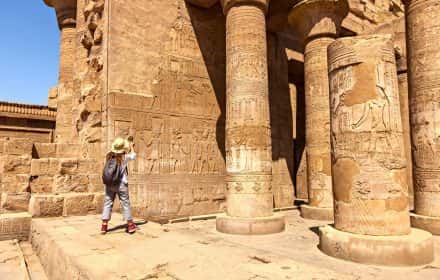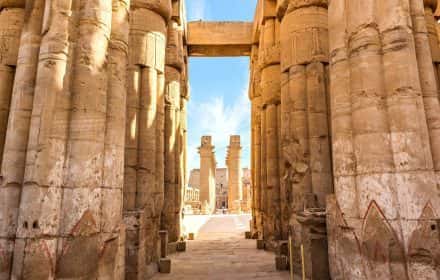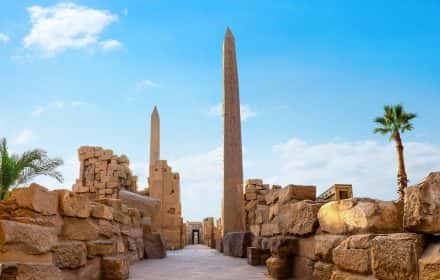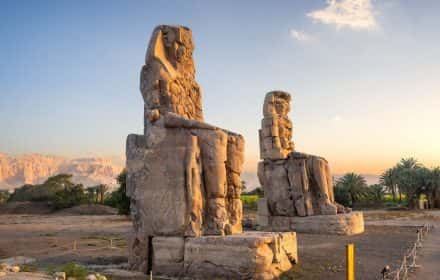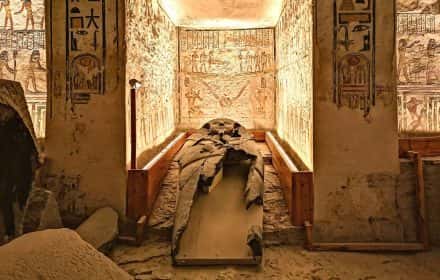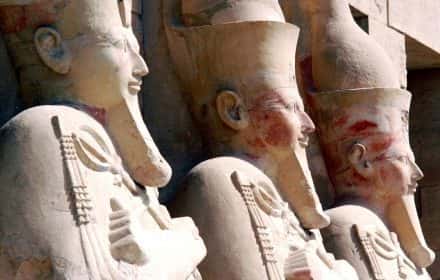This site uses affiliate links, meaning that if you make a purchase through our links, we may earn an affiliate commission.
Planning your visit to the Temple of Hatshepsut in Luxor? Here are my travel-tested 14 tips for visiting the Temple of Hatshepsut in Luxor!
Find out how to get to the temple, how much it costs, and what is the best time to visit.
Read about why the Temple of Hatshepsut is so important and what to see at the temple. Finally, learn about Queen Hatshepsut! Here is everything you need to know to make your visit efficient and memorable!
Want to learn more about the Temple of Hatshepsut? Check out my post What to See at the Temple of Hatshepsut – 7 Things You Can’t Miss.
- 1. What Is the Temple of Hatshepsut
- 2. Where is the Temple of Hatshepsut
- 3. How to Get to the Temple of Hatshepsut
- 4. How Long Does It Take to Visit the Temple of Hatshepsut
- 5. How Much Does It Cost to Visit the Temple of Hatshepsut
- 6. Can You Take Pictures Inside the Temple of Hatshepsut
- 7. What Are the Opening Hours of the Temple of Hatshepsut
- 8. What Is the Best Time to Visit the Temple of Hatshepsut
- 9. Do You Need a Guide to Visit the Temple of Hatshepsut
- 10. Who Was Hatshepsut
- 11. What Did Hatshepsut Accomplish as a Pharaoh
- 12. Why Was Hatshepsut Removed from History
- 13. What to See at the Temple of Hatshepsut
- 14. Who Is Responsible for the Restoration of the Temple of Hatshepsut
What Is the Temple of Hatshepsut
The Temple of Hatshepsut, also known as Djeser-Djeseru (Holy of Holies), is a mortuary temple built by Pharaoh Hatshepsut and dedicated to herself and the god Amun.
The Temple of Hatshepsut is built into a cliff face and consists of a series of terraces lined with columns that can be reached by long ramps.
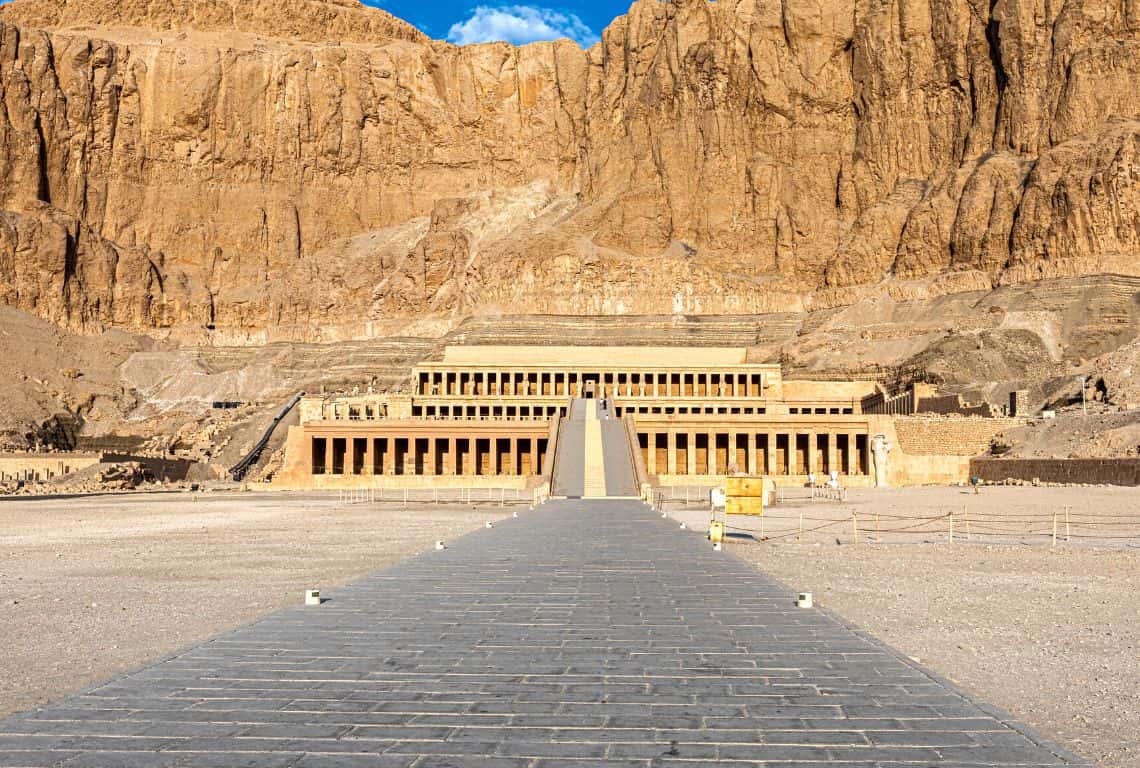
The Courtyard at the Temple of Hatshepsut / Tips for Visiting the Temple of Hatshepsut
Where is the Temple of Hatshepsut
The Temple of Hatshepsut is located in Upper Egypt. Specifically, it is situated beneath the cliffs at Deir el-Bahari on the West Bank of the River Nile in Luxor. It is no more than a 10-15 minute car ride from the Valley of the Kings.
Image Credit: Map data @2020 ORION-ME
How to Get to the Temple of Hatshepsut
Getting to the Temple of Hatshepsut, which is located about 17 miles northwest of Luxor on the West Bank, requires either hiring a driver, getting a taxi, or joining a bus tour.
- With a Private Guide and a Driver
Honestly, having a driver and a tour guide is the best option for visiting the Temple of Hatshepsut. This option gives you total flexibility.
Now, if you are staying in one of the hotels in Luxor, your hotel will be more than happy to arrange for you a driver and a guide. Needless to say, this is an expensive option, but it is all worth it.
- On a Tour
You can ask your hotel for a bus tour that stops at all major attractions in Luxor. It is probably one of the least expensive options. But, it does not give you much flexibility.
- By Taxi
Another option is to just book a taxi and head to the Temple of Hatshepsut. You will always be able to hire a guide right at the entrance to the Temple of Hatshepsut.
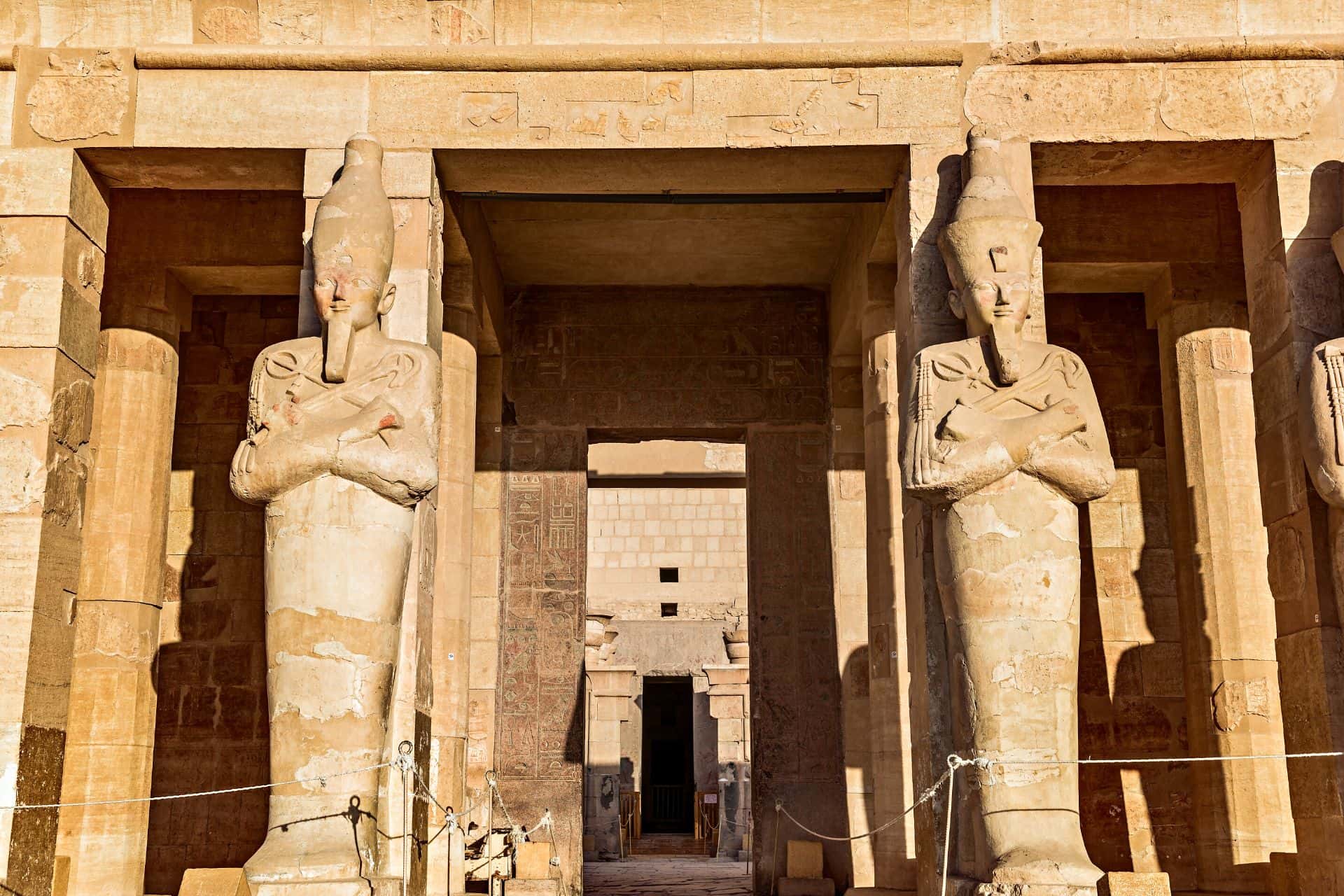
Tips for Visiting the Temple of Hatshepsut
How Long Does It Take to Visit the Temple of Hatshepsut
My recommendation is to dedicate at least 2 to 3 hours to tour the Temple of Hatshepsut. The temple grounds are vast. You will need to walk quite a bit. If you are visiting during the late spring, summer, or early fall, the temperatures can be brutal. Make sure to carry a lot of water, and apply a ton of sunblock. And, don’t forget a hat. Finally, just a reminder, to wear comfortable walking shoes.
To make your visit efficient make sure to read What to See at the Temple of Hatshepsut (7 Things You Can’t Miss).
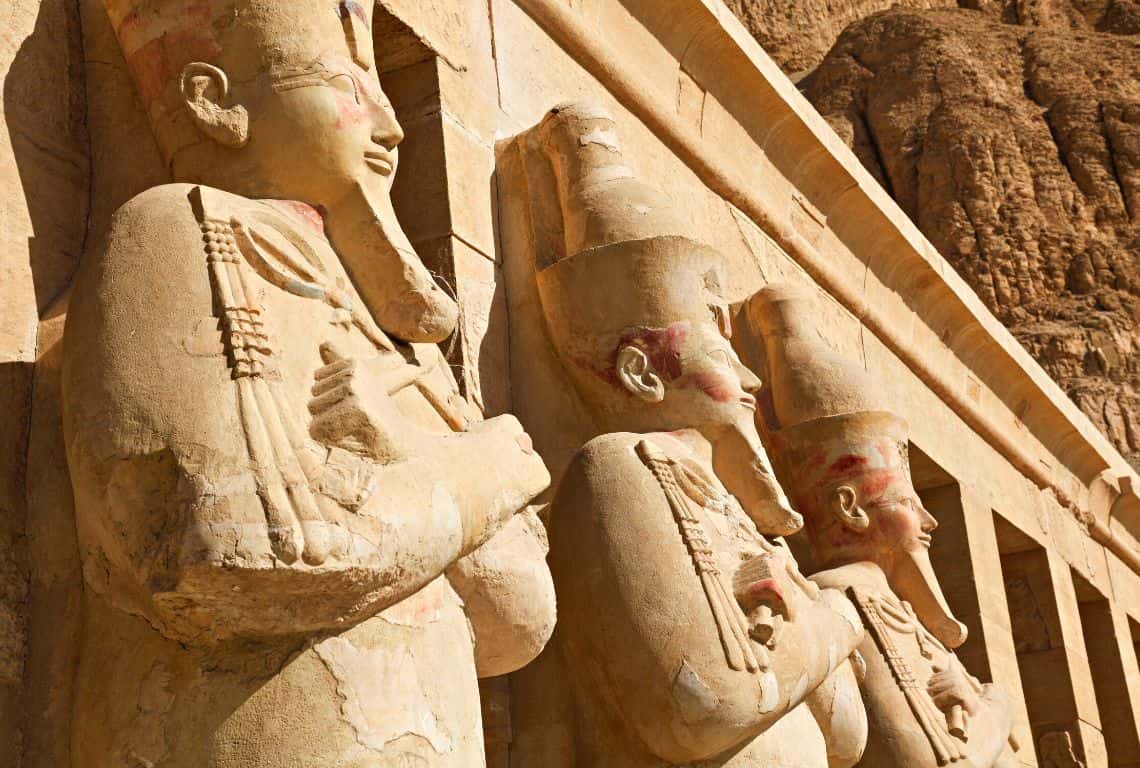
Statues at the Temple of Hatshepsut / Tips for Visiting the Temple of Hatshepsut
How Much Does It Cost to Visit the Temple of Hatshepsut
The entrance ticket to the Temple of Hatshepsut costs 140 EGP. I need to add that I do not know if it is possible to buy tickets in advance. I have not found many resources on the internet. As I mentioned before, the temple grounds are vast. You will not really feel that the area gets crowded. It does occasionally get busy when the large tour groups pass by.
Can You Take Pictures Inside the Temple of Hatshepsut
During my visit to the Temple of Hatshepsut, I was able to use my camera as well as my cellphone. However, once you are in Egypt, you will discover that the rules change. So be prepared. Always take your camera with you and store it in your backpack.
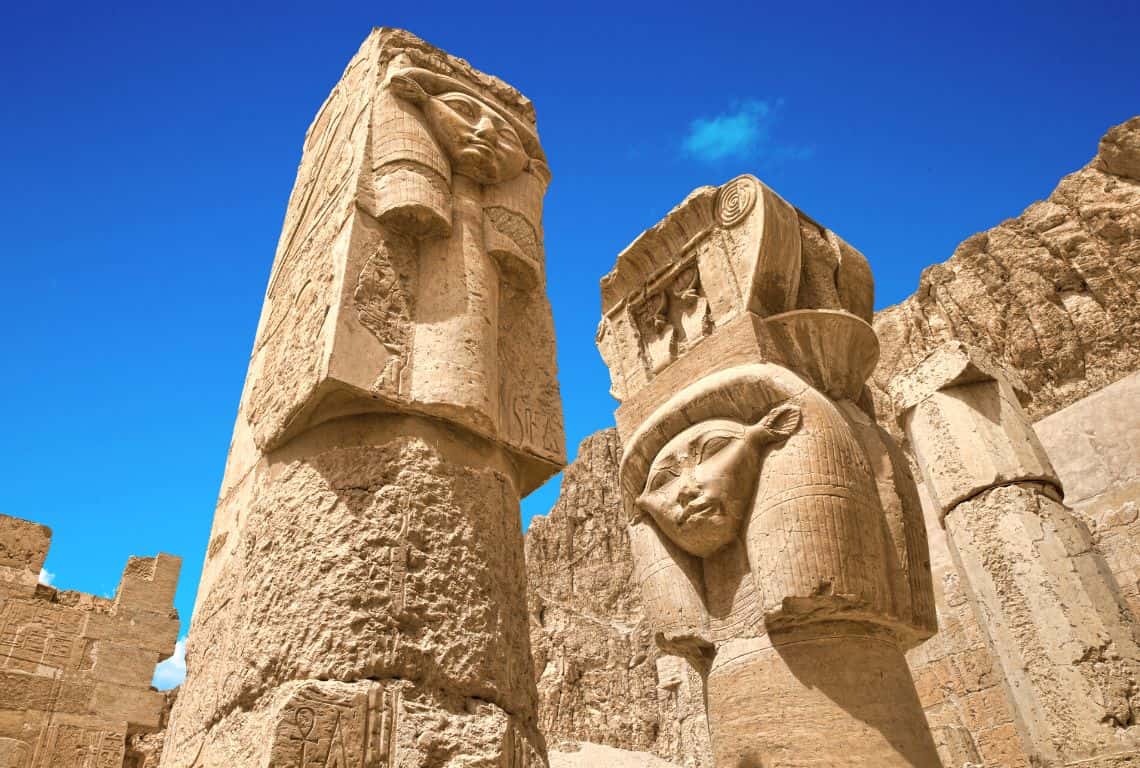
Temple of Hathor / Tips for Visiting the Temple of Hatshepsut
What Are the Opening Hours of the Temple of Hatshepsut
The Temple of Hatshepsut is open daily from 6 a.m. to 5 p.m.
What Is the Best Time to Visit the Temple of Hatshepsut
As I mentioned before, no matter what time of the year you are visiting, the entire region is notorious for high temperatures. My best advice is to arrive as early in the day as possible or even as late as possible.
However, I understand that sometimes it is not possible due to a packed itinerary. So, if you happen to have your tour of the Temple of Hatshepsut scheduled right in the middle of the day, make sure to wear a hat, apply sunblock or wear a light long sleeve shirt and light long pants. Needless to say, wear comfy shoes! Don’t forget water!
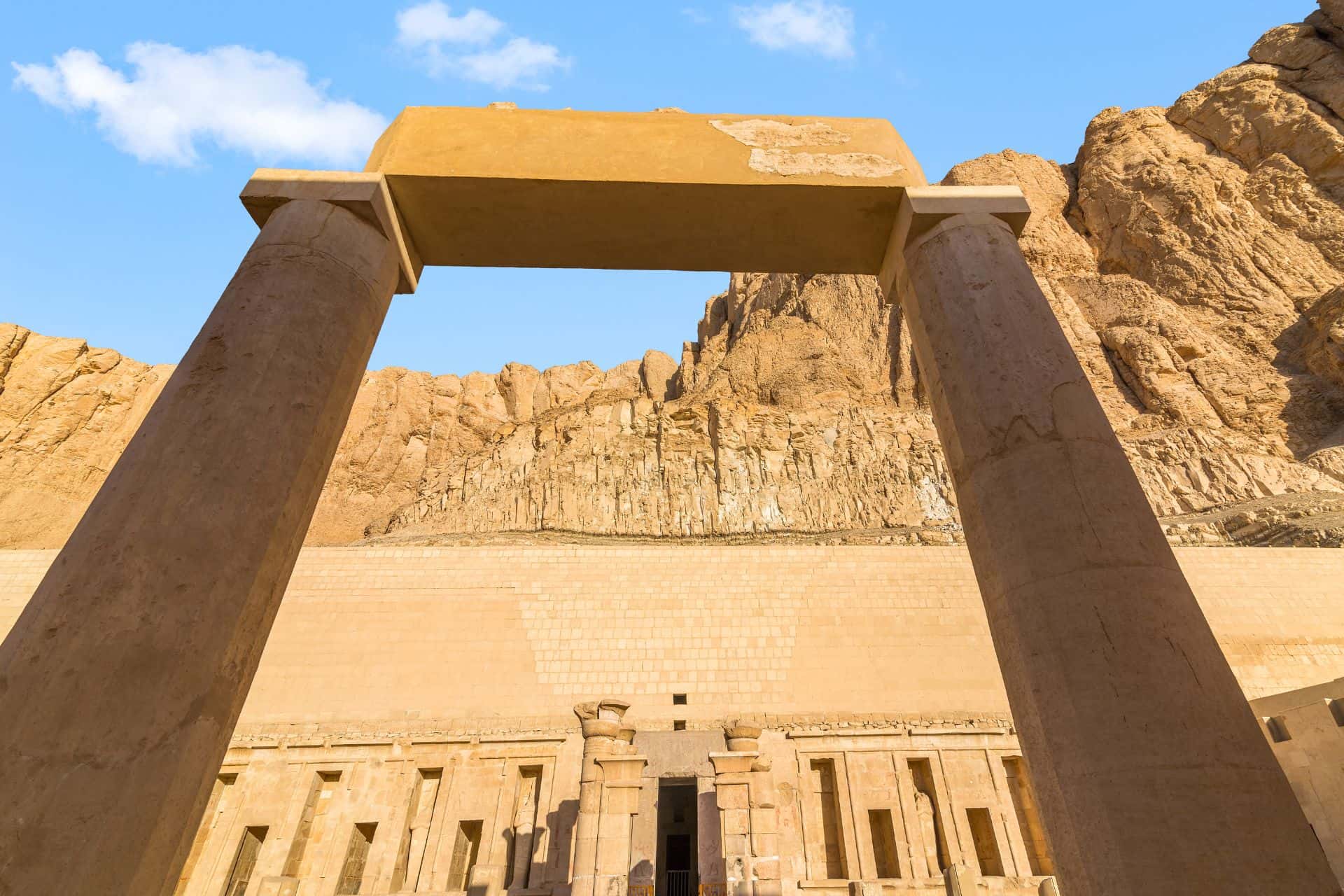
The Courtyard at the Temple of Hatshepsut / Tips for Visiting the Temple of Hatshepsut
Do You Need a Guide to Visit the Temple of Hatshepsut
First of all, you do not a tour guide to explore the Temple of Hatshepsut. You can roam the temple grounds all by yourself and soak it all in. However, as I always said, having a knowledgeable guide by your side is simply invaluable.
Notwithstanding, while I was being transported to the Temple of Hatshepsut, my guide talked to me about Hatshepsut and gave me an overview of her reign. Once, we got to the temple, he walked me through all the key areas and explained the importance of each section.
Who Was Hatshepsut
To start off, before you head to the Temple of Hatshepsut, let’s find out who Hatshepsut was!
Hatshepsut (born c. 1507 BC – died 1458 BC) was the daughter of Thutmose I. She became the queen of Egypt when she married her half-brother Thutmose II.
Upon the death of Thutmose II, Hatshepsut began acting as regent for her stepson Thutmose III.
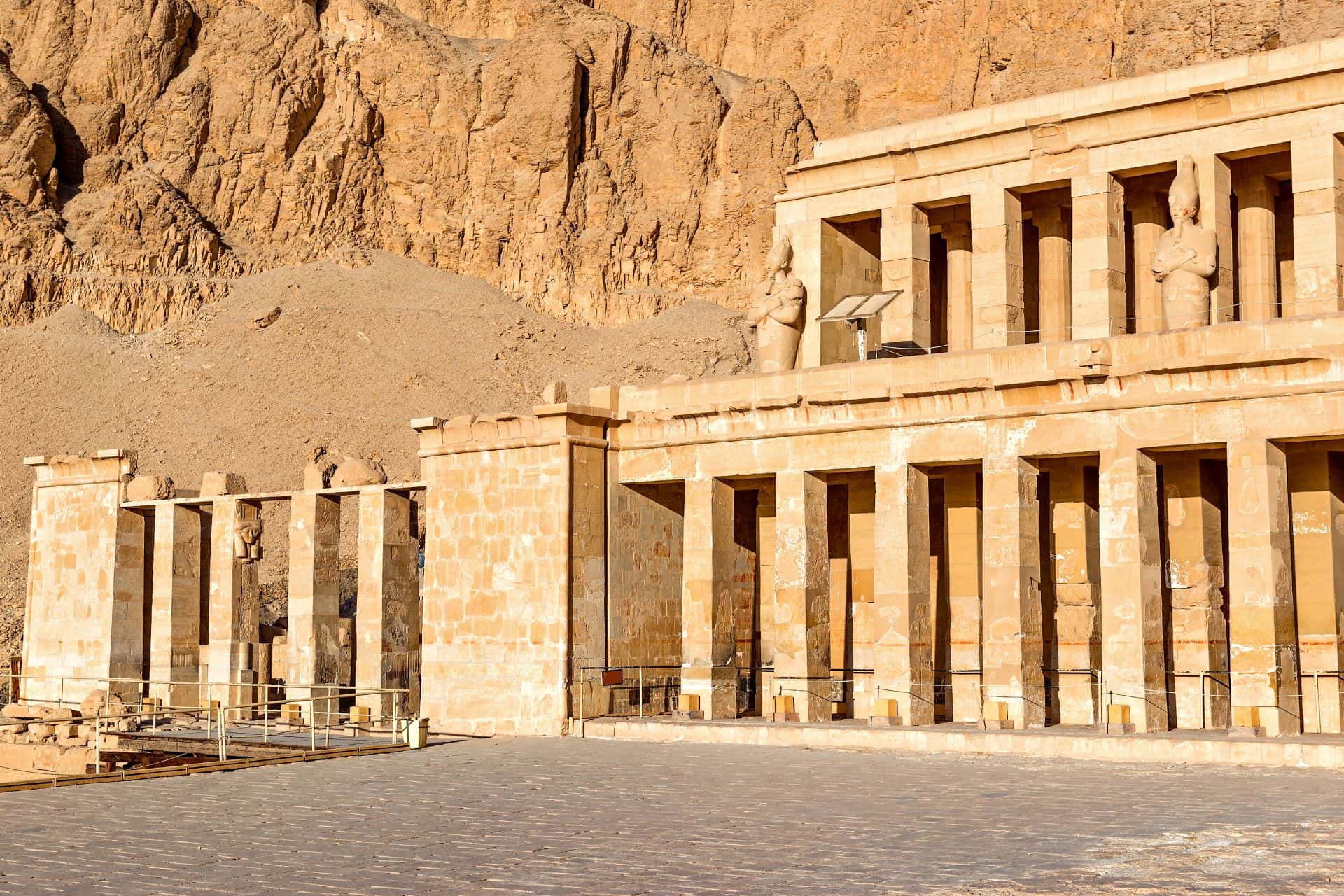
Tips for Visiting the Temple of Hatshepsut
Hatshepsut was supposed to control the affairs of the state until Thutmose III was to come of age. However, around 1473 BC, Hatshepsut broke with the tradition and had herself crowned as the pharaoh of Egypt becoming a co-ruler of Egypt with Thutmose III.
Was it ambition or a political crisis that prompted Hatshepsut to assume the title and full powers of a pharaoh?
After less than seven years, however, Hatshepsut took the unprecedented step of assuming the title and full powers of a pharaoh herself, becoming co-ruler of Egypt with Thutmose III.
Though past Egyptologists held that it was merely the queen’s ambition that drove her, more recent scholars have suggested that the move might have been due to a political crisis, such as a threat from another branch of the royal family, and that Hatshepsut may have been acting to save the throne for her stepson.
Interestingly, I think, Hatshepsut knew that her reign as a pharaoh might have been vulnerable. I think this is the reason why many of her statues show her as a male pharaoh with a beard.
What Did Hatshepsut Accomplish as a Pharaoh
Hatshepsut’s major accomplishment was opening and expanding the trade routes.
Her expedition to the Land of Punt is beautifully documented in the section of the Temple of Hatshepsut called the Punt Colonnade.
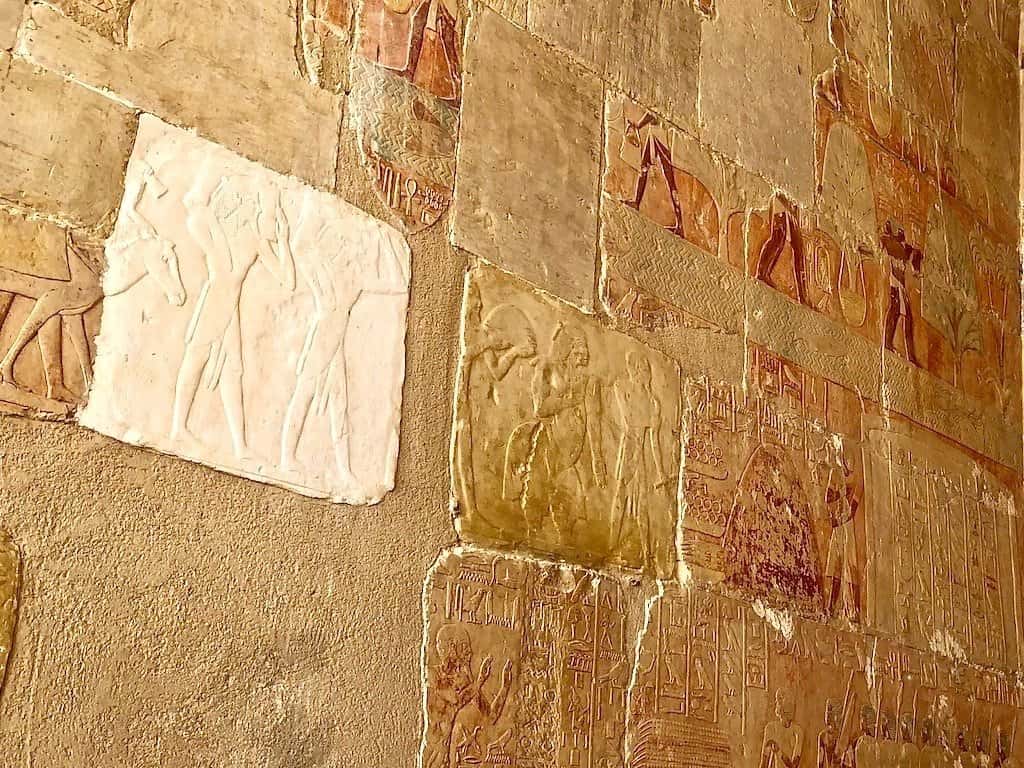
Tips for Visiting the Temple of Hatshepsut
The Punt Colonnade reveals a lot about the expedition spearheaded by Hatshepsut. It shows the ships that sailed to the Land of Punt. It depicts the inhabitants of the fairway land.
Furthermore, it shows the variety of trees and animals that were found in the Land of Punt.
Besides trade, Hatshepsut oversaw an immense period of building across Egypt. Needless to say, she was probably one of the most prolific builders in Egyptian history. She employed the great architect Ineni, who also had worked for her father, her husband, and for the royal steward Senemut.
During her reign, so much statuary was produced that almost every major museum with Ancient Egyptian artifacts in the world has Hatshepsut statuary among its collections.
First of all, she had monuments constructed at the Temple of Karnak. Next, she constructed an underground complex carved into a cliff known as the Temple of Pakhet. However, her masterpiece was the mortuary temple she built as a dedication to herself and the god Amun, known as the Mortuary Temple of Hatshepsut.
Hatshepsut’s reign was one of the most in prosperous Egypt’s history. The successful trade contributed to the economic growth and her many public works employed laborers and skilled workers from all over the nation.
Where was the Land of Punt?
The exact location of Punt is still debated by historians. Most scholars today believe Punt was situated to the southeast of Egypt, most likely in the coastal region of modern Djibouti, Somalia, northeast Ethiopia, Eritrea, and the Red Sea littoral of Sudan.
It is also possible that the territory covered both the Horn of Africa and Southern Arabia. Some scholars have argued that Punt is the island of Tamraparni, present-day Sri Lanka.
Source: Wikipedia Commons
Why Was Hatshepsut Removed from History
How and why Hatshepsut died is unknown. There is a lot of speculation and theories out there.
Let’s not forget that throughout Hatshepsut’s rule, Thutmose III was well and alive. However, Hatshepsut had him occupied with leading the armies of Egypt on different campaigns.
It is estimated that Hatshepsut died around 1458 BC.
Interestingly, Thutmose III had almost all of the evidence of Hatshepsut’s rule erased. It included all of her images on the temples and monuments. However, he left the story of her divine birth and her expedition to the Land of Punt mostly untouched.
Again, we can only speculate why Thutmose III went to such lengths to have her completely removed from history. As my tour guide explained, it is possible that Thutmose III wanted to eliminate the existence of a strong female ruler. He then backdated his reign to the death of his father and Hatshepsut’s accomplishments as pharaoh were ascribed to him. Let’s not forget that at that time to have someone’s name erased meant to deny them the afterlife.
As a consequence, Hatshepsut remained unknown for centuries. It was not until 1829 AD, when the hieroglyphs on the walls of the Mortuary Temple of Hatshepsut were decoded, that we were able to learn about her existence.
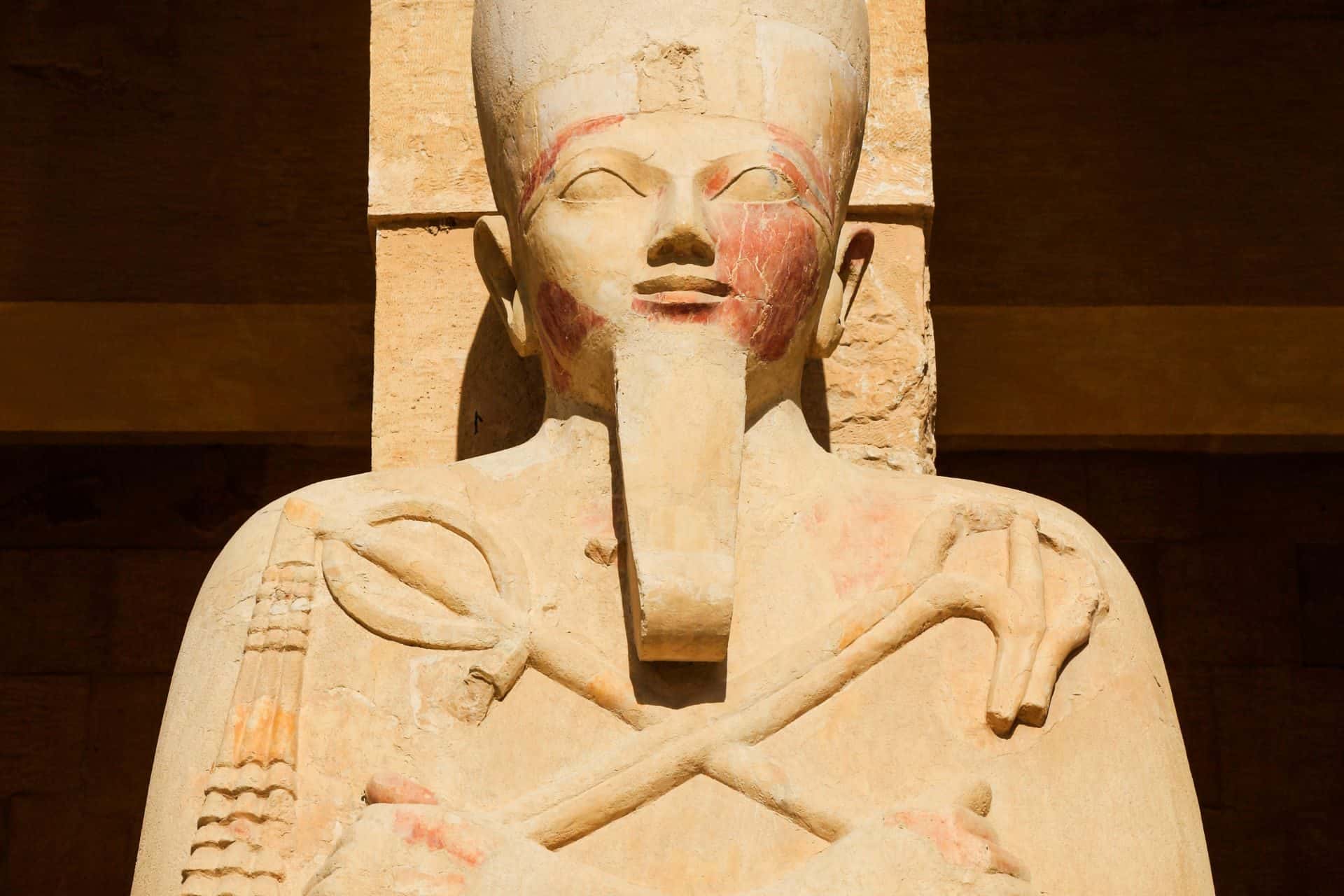
Tips for Visiting the Temple of Hatshepsut
In 1822 AD Champollion published the first translation of the Rosetta Stone hieroglyphs. Several years later, specifically in 1928 AD, Champollion set on an Egyptian expedition to confirm the validity of his discovery.
It was not until 1829 AD, when Champollion read the hieroglyphs on the walls of the Mortuary Temple of Hatshepsut, that we were able to learn about the existence of Hatshepsut.
What to See at the Temple of Hatshepsut
The Temple of Hatshepsut was built into a cliff face that rises sharply above the structure.
The temple consists of three levels: the ground, the second, and the third level. A large ramp leads from the ground level to the second level. And, then another ramp connects the second level to the third level. Next, each level has a beautiful colonnade.
I need to add that the Temple of Hatshepsut reminded me of some of the Greek monuments although those were built at least a thousand years later.
Make sure to find out all the details and see the pictures of the must-see things at the temple. Check out my post: What to See at the Temple of Hatshepsut (7 Things You Can’t Miss).
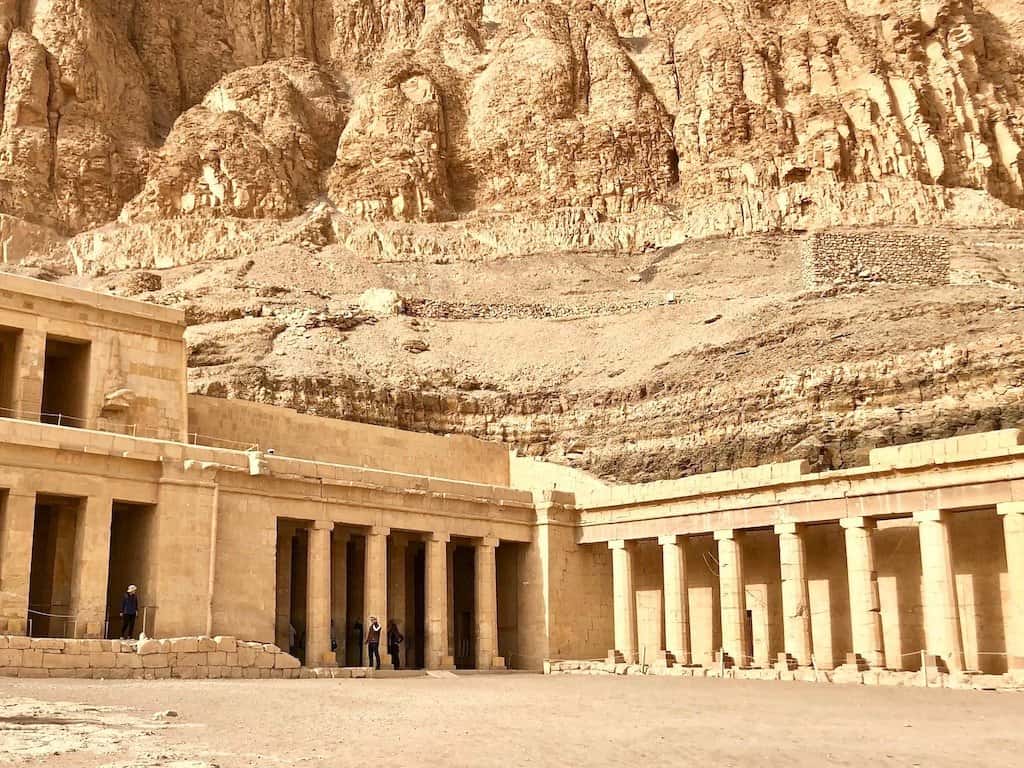
Tips for Visiting the Temple of Hatshepsut
Who Is Responsible for the Restoration of the Temple of Hatshepsut
The Polish Academy of Sciences in Warsaw is responsible for the study and restoration of the three levels of the temple.
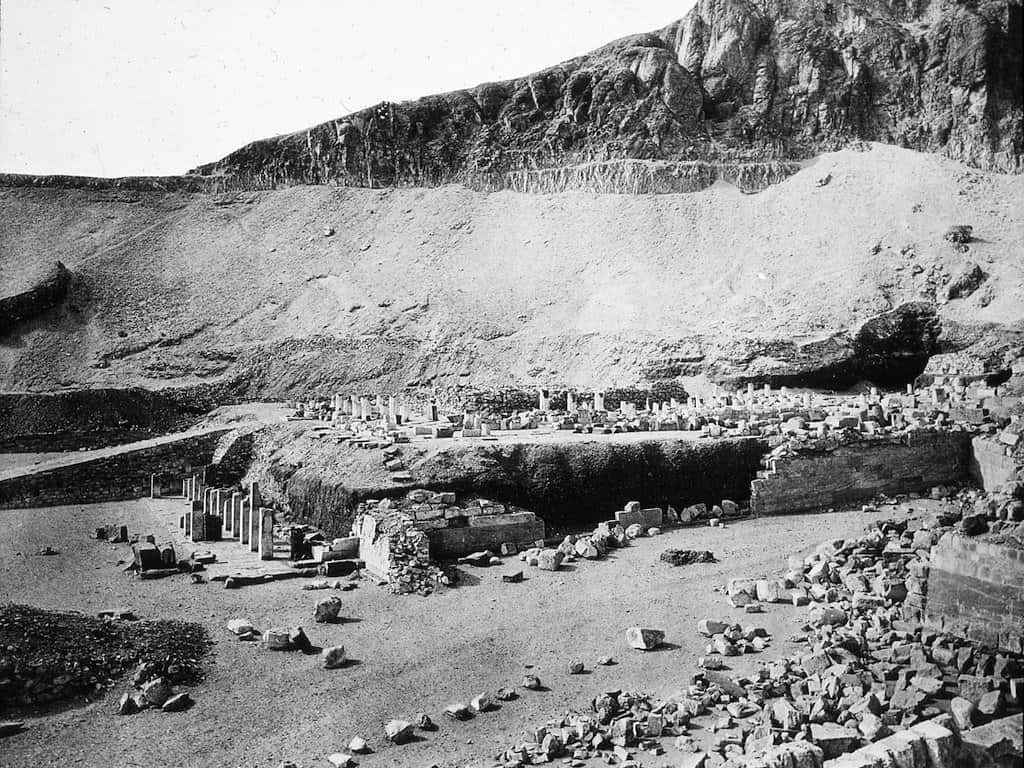
The restoration project has been going on since 1961. Image Credit: Wikimedia Commons
You Might Also Like
10 Epic Things to See and Do at the Pyramids of Giza
12 Important TIPS for First VISIT to VALLEY of the KINGS in Luxor
12 Important TIPS for Hot AIR BALLOON RIDE in LUXOR, Egypt (Read Before You Book It)
Perfect 2-Day Itinerary in Luxor (7 Things You Can’t Miss)
14 EGYPT TIPS for FIRST TIMERS (How to Save Time, Money, and Be Safe)
How to Visit And What to See at ABU SIMBEL (9 Practical Things to Know)
How to Visit KARNAK TEMPLE in Luxor (9 Amazing Things You Can’t Miss)
19 Must-See Things at Egyptian Museum in Cairo (+Practical Tips)
Why You Should Visit Horus Temple of Edfu in Egypt
Now, It Is Your Turn, I Would Like to Hear Back from You!
Are you planning your trip to Luxor?
Please let me know! Drop me a quick comment right below!
Click on any of the images below to get inspired and to help you with the planning process for your trip to Luxor!
